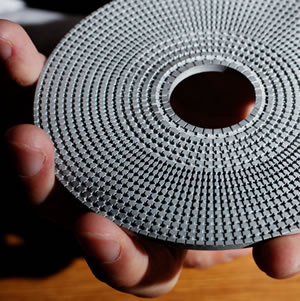
A research team from the University of Illinois, led by mechanical science and engineering professor Nicholas Fang, have demonstrated a technology that renders underwater objects invisible to sonar and other ultrasound waves.
This kind of an ‘acoustic cloak’ could be used in the future to mask submarines from enemy sonars.


While materials that can wrap sound around an object rather than reflecting or absorbing it have been theoretically possible for a few years, a prototype demonstrating such process was never realized – until now. In a paper accepted for publication in the journal Physical Review Letters, Fang’s team describe the principles used in constructing such prototype.
The cloak is made of metamaterial, a class of artificial materials that have enhanced properties as a result of their carefully engineered structure. Fang’s team designed a two-dimensional cylindrical cloak made of 16 concentric rings of acoustic circuits structured to guide sound waves. Each ring has a different index of refraction, meaning that sound waves vary their speed from the outer rings to the inner ones.
“This is not just a single wavelength effect. You don’t have an invisible cloak that’s showing up just by switching the frequencies slightly,” Fang said. The acoustic cloak demonstrated its ability to cover a broad range of sound wavelengths, from 40 to 80 KHz, although with modification could theoretically be tuned to cover tens of megahertz.
“Basically what you are looking at is an array of cavities that are connected by channels. The sound is going to propagate inside those channels, and the cavities are designed to slow the waves down,” Fang explained. “As you go further inside the rings, sound waves gain faster and faster speed.” Since speeding up requires energy, the sound waves instead propagate around the cloak’s outer rings, guided by the channels in the circuits. The specially structured acoustic circuits actually bend the sound waves to wrap them around the outer layers of the cloak.

The researchers tested their cloak’s ability to hide a steel cylinder. They submerged the cylinder in a tank with an ultrasound source on one side and a sensor array on the other, then placed the cylinder inside the cloak and watched it disappear from their sonar. Curious to see if the hidden object’s structure played a role in the cloaking phenomenon, the researchers conducted trials with other objects of various shapes and densities. “The structure of what you’re trying to hide doesn’t matter,” Fang said. “The effect is similar. After we placed the cloaked structure around the object we wanted to hide, the scattering or shadow effect was greatly reduced.” The geometry is not theoretically scaled with wavelengths.
















